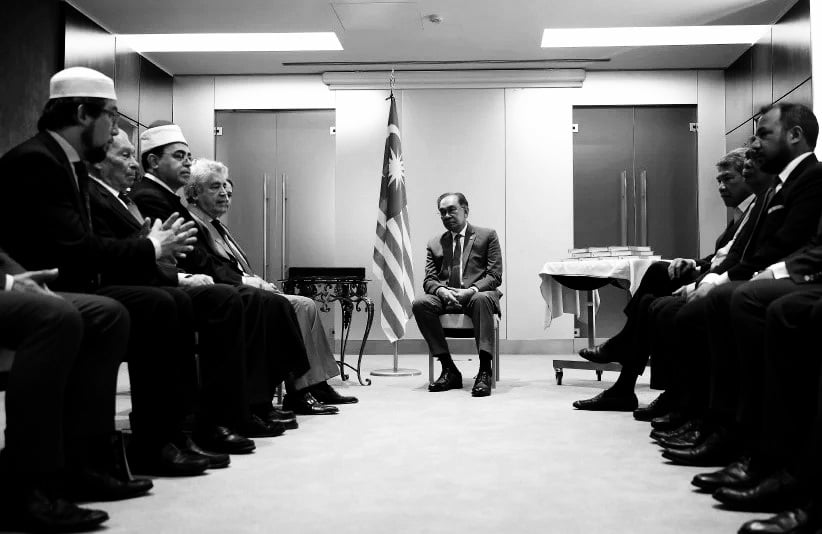There is a concrete breach in the entire process of globalisation. The Ukraine conflict is just the last sign of the irreversible crisis of the global embedded liberalism: the unipolar Pax Americana.
Some experts discuss the fragmentation of globalisation in many similar but simultaneously different regional processes. However, one thing is taken for granted: world politics is changing, and the global balances are shifting to, or – better saying – coming back to, Asia and the Pacific Ocean.
Analysts and public opinions are worried about China and its alleged unpeaceful rise. However, no one talks about ASEAN and how SouthEast Asia will shape the future of global economics and politics in the upcoming times.
ASEAN is one of the most growing and developing economic actors in Southeast Asia and globally. Given some reasons that will be later investigated and explained, the Associations of Southeast Asian Nations have been economically performing well for years. It is still attracting more foreign direct investments, becoming one of the most stable and business-friendly communities worldwide.
ASEAN is an intergovernmental organisation of Southeast Asia established in 1967 on the influence of the “Conference of Bandung” in 1955, which is the basis of the so-called “Non-Aligned Movement”. Therefore, it has to say the world forum of developing countries. Consequently, a point which is in common with many other organisations of regional integration, ASEAN has its founding principles, which are strictly connected with those of the NAM, namely:
- The “indigenousness” character of the organisation is represented by the adoption of all the members’ languages as co-official working languages;
- The policies of non-interference and non-alignment;
- The fundamental issue of avoiding public discussion of contentious issues related to ASEAN and its members.
The Bangkok Declaration and the ASEAN Charter
Another fundamental source of the political principles of ASEAN is the so-called Bangkok Declaration (1967). The Bangkok Declaration is a document of deepening and political implementation of the founding principles: indeed, according to it, the primary purposes of the organisation are the need for economic growth, social progress and cultural development. Moreover, in the same document, some other points are considered political priorities of the organisation, namely: the support for regional integration, multilateralism and stability, mutual assistance and active collaboration, the promotion of Southeast Asian studies.
Initially, ASEAN had fewer founding members than today: nowadays, its membership can count on countries such as Indonesia, Brunei, Malaysia, Thailand, Cambodia, Vietnam, Singapore, Laos, Myanmar, Philippines. As previously said, ASEAN is an intergovernmental organisation of sovereign states that mutually cooperate on economic, security and political issues. But, with a particular reference to the financial aspects, the arising research question is the following.
What are the explanatory reasons behind the economic success of ASEAN as a regional organisation promoting stability, development and progress in a crucial area such as Southeast Asia?
Consequently, regarding the ASEAN Economic Community and the way of doing business in the member countries, the central hypothesis which may answer the question above is linked to multiple factors such as the legal foundations of ASEAN and the effectiveness of the institutional structure to evidence of history; the competitive international context; the economic policies at both an internal and international level.
Following that, it is equally helpful to briefly mention the relation between historical ASEAN institutions and the region’s recent history to comprehend the reasons behind the organisation’s recent success, especially in the economic field.
Indeed, since its foundations, ASEAN was initially a way more decentralised organisation than today, and this was a result of dramatic historical events such as the Vietnam War (1955-1975), the Cambodia War (1967-1975), the Cold War and the consequent strategic rebalance/reposition of the US in the region, the political and economic emergence of PRC and India as poles of global influence.
These events have been crucial for the members to understand the necessity of regional integration between neighbouring states to act as a unique geopolitical player in Southeast Asia.
This awareness then led to the creation of the ASEAN Charter, which is the constituent instrument of the organisation, signed in Singapore in 2007 and a turning point in the entire history of ASEAN.
Why is ASEAN Charter such an entire document?
Since its approval and ratification between 2007 and 2008, the Charter has been the cornerstone of promoting shared values and the establishment of joint institutions/forums of dialogue, such as the AEC, between member States. Indeed, the ASEAN Charter represents the legal and political basis of ASEAN in the 21st century because it encourages the implementation, in any affiliated institution such as the AEC, of the following principles:
- The respect for independence, sovereignty and territorial integrity of each member.
- The importance of equality among members.
- The promotion of regional stability and peaceful settlement of international disputes.
- Besides human rights and social justice, the application of international law concerning international trade.
- The advancement of regional integration of trade.
Therefore, creating an institution like the AEC, which works as an economic forum of cooperation between ASEAN members, coherently reflects the principles exposed in the Charter, with a particular reference to trade and economics, thus making Southeast Asia a friendly and dynamic area for international business.
The successful formula of ASEAN behind the attraction of foreign IDEs, besides the relative cultural homogeneity of the area which is reflected in the common principles and intentions, is the effectiveness of its own “concert of institutions”: as a matter of fact, the AEC is supported by others important institutions such as the DSM, which works as a legal mechanism of peaceful settlement of international disputes in the area, as well as the CPRs, namely a sort of assembly of parliamentarian representatives on the model of the EU.
A successful formula?
This entire system of multilevel organisations paved the way to the so-called “ASEAN Way”, which is the symbol of economic success and extraordinary development, in the last decades, of Southeast Asia if compared to the other competing regions in the world, not only those belonging to the “underdevelopment countries”: namely consensual decision making, the responsibility of each state toward the other members, conflict avoidance, flexible adaptation to the global geopolitical environment.
Indeed, the maintenance of peace in the area through multilevel cooperation and the enactment of technical systems of conflict avoidance (besides the DSM, it is important to mention the presence of the ARF, where security issues are constantly debated) have both been the key for stability and peaceful development, which is a strict necessity when it deals with a rising area, such as Southeast Asia, where international competition and scramble for resources may be predominant and compromising for all.
Furthermore, another secret behind the success of ASEAN as a rising economic area is the general willingness of the member states to preserve that level of national sovereignty which does not allow an excessive level of centralisation of the organisation, especially after the enlargement which occurred in the previous decades: this policy both prevented the hypothetical bureaucratisation of ASEAN following the recent enlargements and prioritised the conservation of a smart and soft institutional system without compromising reciprocal cooperation. This choice aimed to attract more FDIs to the member states while competing with India, PRC, South Korea and Japan.
Even if built on the model of the EU, ASEAN is an organisation that does not require any democratic prerequisites or withdrawal of sovereignty to get a full membership, preferring decentralisation and functionalist cooperation for economic advancement instead.
A clear example may be given by introducing a common agreement, following the Manila Summit in 1977, for facilitating PTAs between ASEAN and foreign economic actors (for instance, the Investment Agreement between EU and ASEAN signed in 1987). Therefore, the status of “soft law organisation” firstly means flexibly adapting to the external input and, at a second level, guarantying the achievement of the founding principles; on the contrary, the status of “hard low organisation” may be compromising and ineffective for development. Once again, in a global context in which Asia is rising in world economics, but western financial markets are still widely influent, sudden external shocks may not be rare. Whenever they occur, rapid and symmetric responses are needed, especially for emerging actors.
Let’s consider the case of the 1997-1998 Asian Financial Crisis, which hardly impacted the Asiatic economies and particularly those of the ASEAN community. It is possible to explain the creation of ASEAN+3 and the Chiang Mai Initiative as rapid internal responses to unexpected external shocks. These initiatives later helped ASEAN economies partially disconnect from the western financial system and avoid the economic solutions given by the so-called Washington Consensus, namely the IMF and the World Bank, seen as a menace to peaceful economic development and political stability.
More in detail, these new economic common platforms stimulated the creation of an alternative system of globalisation in Asia, in competition with the American one, where sovereignty and peaceful order are key to ASEAN competitiveness in attracting external IDEs and facilitating business in the area. It is not a case if then the 2008 GFC did not affect Asia like the West, so the global financial contagion did not compromise the growth rates of ASEAN economies competing with PRC and Japan. The crisis of the Washington Consensus was therefore seen as an opportunity rather than a systematic danger by the member countries.
Furthermore, more objective factors may explain the rise of ASEAN as a global emerging economic and business-friendly area: this is the case of the theory of the “Asianization of the Century” by Parag Khanna, in contraposition with the previous “Americanization of the Century”, which traces its roots in empirical factors related to volume and age of demography in Asia, volumes of trade and economies in the continent as well as the future statistical/innovation economic trends.
ASEAN is undoubtedly likely to be a giant as well as a promising actor not only on a regional but also on a global stage, according to the strategy of “Global ASEAN”, fairly competing with Japan and its FOIP Initiative, India and PRC and its BRI: to give an idea, we talk about quite a legally harmonised and stable economic area of almost 670 millions of people, the 5th territory in the world according to GDP-PPP statistics, average annual growth of 5% hosting an economic giant such as Indonesia.
Conclusion
Considering all the mentioned factors related to ASEAN and Southeast Asia, as well as all the strictly associated indicators, it is possible to say that the Association of Southeast Asian Nations, in the last decades, has been able to successfully benefit from the economic expansion of Asia due to the favourable characteristics of its internal organisation, given by the specific structural typology and the content of the founding documents, and because of the effectiveness to it in response to historical conjunctures and environmental changes.
However, the further development of Southeast Asia as a business-friendly economic area will be given not only by the extent of political and economic influence of the Asian continent in the world but also by the evolution of ASEAN itself in the evolving geopolitical environment. The Association is likely to be called, pushed by external factors, to play a role that will be proportionally different to the incoming challenges.
References
- https://heinonline.org/HOL/LandingPage?handle=hein.journals/fora99&div=100&id=&page=
- https://asean.org
- https://www.cfr.org/backgrounder/what-asean
- https://cris.unibo.it/handle/11585/650325
- https://cris.unibo.it/handle/11585/830875
- https://virtuale.unibo.it/pluginfile.php/912193/mod_resource/content/1/Dian%20China%2C%20the%20US%20and%20the%20regionalism%20in%20Asia.pdf
- https://www.jstor.org/stable/27912117
- https://asean.org/key-documents/





